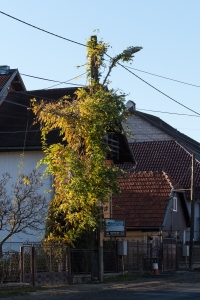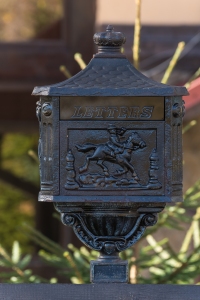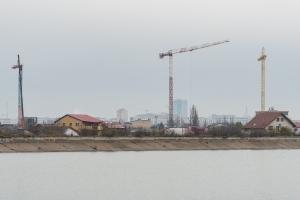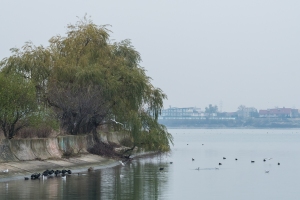Hi folks!
In this post I will continue to write about my vision regarding post-processing of pictures. There is much to say about this subject and indeed countless books have been written. However I don’t intend to “teach” you how to do this but instead only strive to share my personal experience.
As mentioned in previous posts, editing pictures is a time consuming process. It can take many hours, days or even weeks to get a batch of photos through the digital processing phase. Consequently I’m continually thinking of a way to minimize this amount of time so it doesn’t impact my other priorities (after all it’s not everything about taking photos in life, is it?). To make this happen I currently perform two steps:
1. Selection. I keep only the relevant pictures and these can be divided into two categories: “best” ones and the photos from the “less editing” category. The selection is as thorough as possible and the process has already been detailed in this post.
2. I enforce the editing paradigm required for each of the two categories of photos. The best ones will “benefit” from extensive editing while the other ones will be processed in “one touch“. Let me elaborate on this in the next sections.
Extensive editing
This involves performing processing in multiple iterations in Lightroom and Photoshop. Parameters like exposure, contrast, highlights, shadows, white balance, colour channels and many others are being changed multiple times until the result looks satisfactory. Special selective processing like adjustment brush and gradual filters is being employed. When the Lightroom work is done, the picture might be exported to Photoshop to get a final retouch. This final stage might also take some good time as not every unwanted object is easy to remove from the frame. Finally the photo is being exported as highest quality JPEG.
One thing to be mentioned regarding this class of photos is that iterations might span several days. One the one hand I might not have the time to get it ready in a single day. On the other hand I find it useful to take more days as the same picture might look differently to me next day after a good night’s sleep (or an editing break anyway).
One touch editing
Pictures that do not belong to the “best” category (usually the largest part of the remaining photos) are processed minimally. My personal “rules” for doing this are following:
– each and every parameter is modified in Lightroom only ONCE. This includes but is not limited to: white balance, exposure, contrast, tones (highlights, whites, blacks, shadows), vibrance, saturation, sharpness, noise reduction, color channels. No matter the result it stays like this and it can only be undone to the original value but nothing more. Then I proceed to next parameter.
– no adjustment brush in Lightroom. Like many other selective editing tools this is often a costly process and I only use it for “best” and only if there is no other way to get the desired result.
– no gradual ND filters applied from Lightroom
– most of all, no Photoshop. Everything is being handled in Lightroom.
Maybe you would ask me: why do you edit them minimally? Why not skip editing completely? There are several reasons for which I do this.
First, in my opinion every kept picture deserves an amount of editing, even if it’s minimal. The exceptions are JPEG taken straight out of camera which are usually people/portaits (which I don’t process) . Otherwise I want to add a personal touch to every photo I keep.
Second, this is a good editing exercise. It keeps me “editing-fit”. It might even help me discover new techniques and improve my skills. It’s also a “warm-up” for editing the “best” photos.
Third, even if these are not my best photos I still use them for certain purposes like publishing on the web. Usually my posts contain a mix of “best” and “less editing”. You don’t necessarily publish your best work but the one that is most relevant for specific subject, don’t you? And maybe some of the readers will like the “less editing” shots more than the best ones. In the end our choices are subjective and photos don’t make an exception.
Last but not least it’s a challenge for me: how good will my pictures look by using a minimal number of clicks at processing?
Below you’ll find some pictures from both categories.
I hope you’ll find this article useful. Please don’t hesitate to share your opinions and feedback on this matter.
Take care!
PS. Check these posts too:
How I Edit My Pictures
What Photography Means To Me (5)
The Bucharest International Airshow (BIAS) – 2019 Edition
Some Findings About Time-Lapse Movies
The Magic of Fog. Welcome to the Misty Mountains!
1. Photos With Extensive Editing
2. Photos with One Touch Editing


























“– most of all, no Photoshop. Everything is being handled in Lightroom.”
Guess you now that processing a raw file is possible by converting it with Camera Raw which could be separately in Photoshop or integrated in Lightroom. Either way that allow a great change in initial parameters, you could make a color picture black&white, or desaturated, or change all color for a specific profile, hdr, even clone and also masking…. So, in any way you could change almost anything and save at end in a specific image like jpeg or else, even you didn’t really open Photoshop (for that is Adobe Bridge made) 🙂
Thank you for your input. You are right. What I meant by “Photoshop” are specific functions like content aware fill which I use for removing specific objects that are unwanted in the picture. I only use these for “best” pictures.